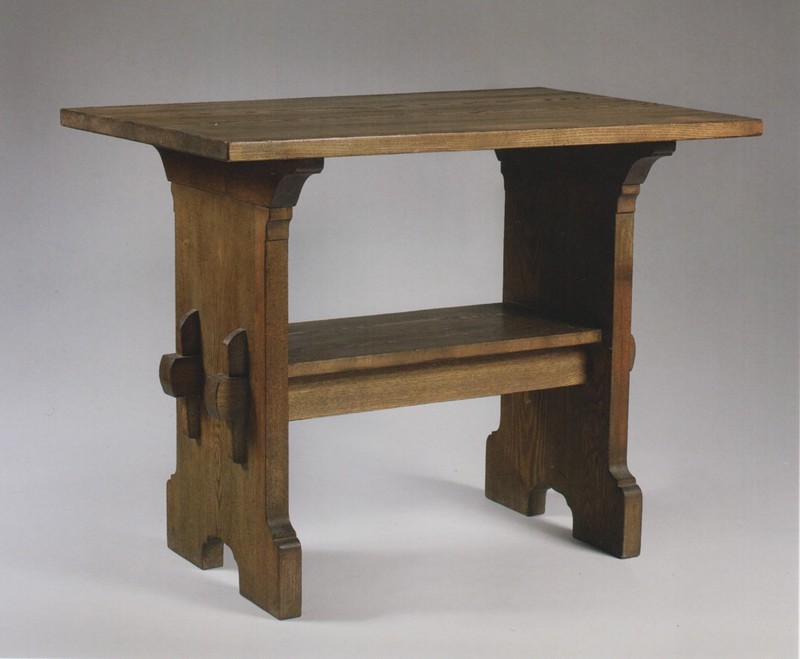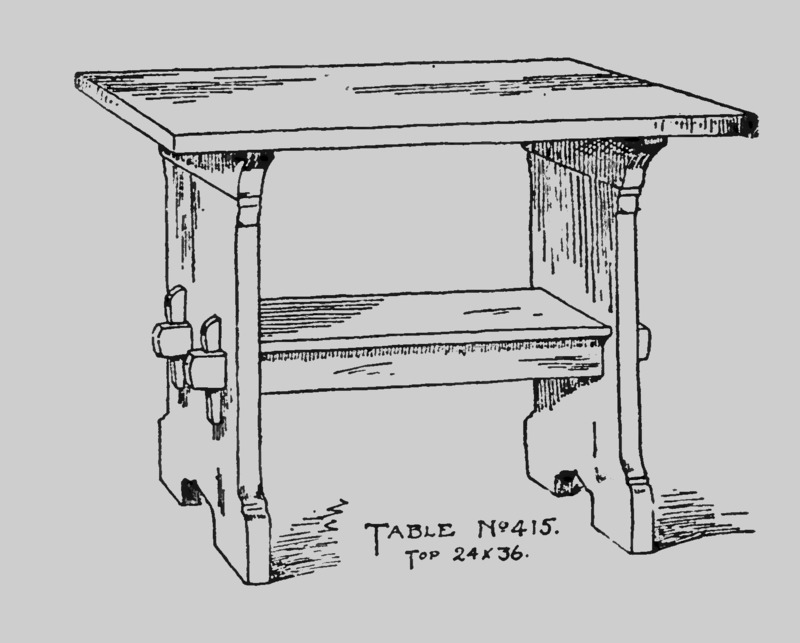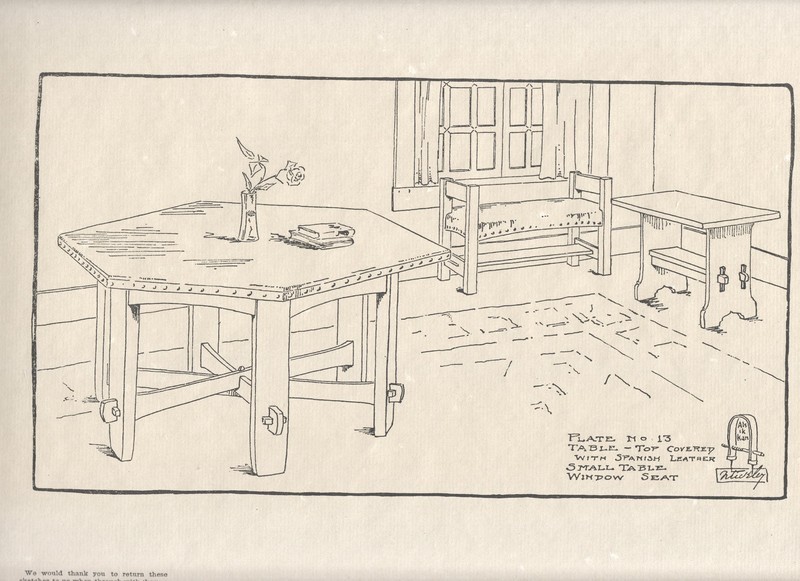Bungalow Library Table (no. 415)
Item
Title
Bungalow Library Table (no. 415)
Creator
United Crafts
Date
1901-02 (ca.)
Medium
Ash
Object No.
2018.19.05
Credit line
Gift of Gregg and Monique Seibert
Description
Previously unidentified in the literature on Stickley, Library Table (no. 415) is among the numerous forms which appear in Stickley’s sales journals and annual inventories that have no known image in the catalogs the firm issued. Documented in production from 1900 to 1904, the table must have continued to sell well, since it is one of a handful of forms to survive the factory’s aesthetic shifts as Stickley’s vision coalesced into the more standardized suite of furniture offered in the second half of the decade. Were it not for a labeled line drawing featured in the fall of 1903 in an advertisement for Silberstein & Bondy Company in The Duluth Evening Herald, this form would have remained unidentified (fig. 2).
Originally finished in a bright green, the table serves as a powerful example of the fussier aspects of Stickley’s early aesthetic. If the thick dimension of the table’s top and sides are familiar tropes to describe the company’s work, the busy shape of the intricately-shaped sides and shaped cut-outs at the base seem incongruent with the general thrust of the Arts and Crafts movement. As Stickley later recalled about his development during this period:
It has been, like everything else, a matter of growth. I tried flat forms first but soon abandoned them in favor of the square, which I regard as a gain both in beauty and durability. …The only decoration that seems in keeping with simple structural forms lies in the emphasizing of certain features of the construction, such as the mortise, tenon, key and dovetail.
Stickley’s numbering system, especially in the first five years of his solo endeavor, often gives the impression of randomly- or serially-assigned numbers, and the present example only strengthens that perception. In fairness, Stickley probably struggled to accommodate new forms within the existing numbering system he inherited from the Stickley & Simmonds forms, some of which he continued to produce through at least 1904. During this period, many of the tables introduced were clustered in the 400s range, although the assignment of numbers does not appear–from the limited evidence that remains–to have been chronological.
Originally finished in a bright green, the table serves as a powerful example of the fussier aspects of Stickley’s early aesthetic. If the thick dimension of the table’s top and sides are familiar tropes to describe the company’s work, the busy shape of the intricately-shaped sides and shaped cut-outs at the base seem incongruent with the general thrust of the Arts and Crafts movement. As Stickley later recalled about his development during this period:
It has been, like everything else, a matter of growth. I tried flat forms first but soon abandoned them in favor of the square, which I regard as a gain both in beauty and durability. …The only decoration that seems in keeping with simple structural forms lies in the emphasizing of certain features of the construction, such as the mortise, tenon, key and dovetail.
Stickley’s numbering system, especially in the first five years of his solo endeavor, often gives the impression of randomly- or serially-assigned numbers, and the present example only strengthens that perception. In fairness, Stickley probably struggled to accommodate new forms within the existing numbering system he inherited from the Stickley & Simmonds forms, some of which he continued to produce through at least 1904. During this period, many of the tables introduced were clustered in the 400s range, although the assignment of numbers does not appear–from the limited evidence that remains–to have been chronological.
Associated names
Gustav Stickley
Provenance
Purchased, en suite, by an undisclosed buyer, ca. 1901, then by descent. Dalton’s American Decorative Arts and Antiques (September 2001). Cathers and Dembrosky (by 2002). Gregg and Monique Seibert (2002).



